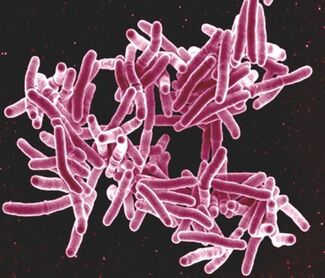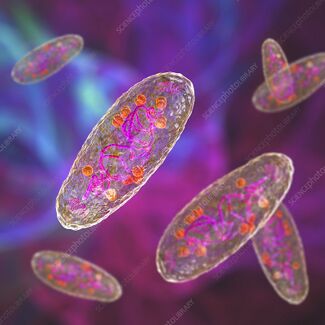Ancient Bacteria and Their Role in Human Evolution and Health
Introduction
The study of ancient bacteria found in archaeological and anthropological contexts has revealed significant insight into human evolution, the microbes that co-evolved with humans, and modern human health. Advances in molecular biology, particularly DNA sequencing and Polymerase Chain Reaction study, have enabled researchers to recover and analyze bacterial DNA from ancient human remains, providing valuable information about past diseases, environmental conditions, and microbial evolution. These studies are revolutionizing our understanding of both human and microbial histories, linking evolutionary events to the microbial world.

Recent Discoveries and New Methods
Bacterial Preservation in Ancient Remains
Ancient bacteria have been discovered in many archaeological finds, including among human skeletal remains. These bacteria are often preserved in environments that favor long-term conservation, such as permafrost, dry caves, or sediment layers [1]. The preservation of bacterial DNA in these remains offers an unprecedented opportunity to study the health and microbial life of past populations, as well as the diseases they encountered. This preservation allows scientists to study microbe colonies from over a millennia ago, opening a window into how ancient humans lived and interacted with their environment. Bacteria are preserved in a variety of forms, including living cultures and DNA, allowing for their identification in ancient specimens[2]. The identification of these bacteria in ancient fossil records illustrates how microbial life can be preserved in archaeological and geological contexts, providing valuable data for studying ancient ecosystems. Researchers use techniques like DNA sequencing and isotopic analysis to uncover traces of ancient microbes in preserved sediments, which is directly relevant to studies of ancient human sites.
Methods of Detection
Advances in molecular biology, especially PCR (Polymerase Chain Reaction) and DNA sequencing, have enabled the identification of ancient bacterial DNA in archaeological and anthropological contexts. These techniques allow researchers to detect and sequence bacterial DNA even when the samples are degraded or fragmented, increasing the ability to study ancient microbiota[3]. Techniques like these have allowed researchers to identify and sequence bacterial genomes from degraded remains. These methods have opened new doors for the study of ancient microbes, enabling the reconstruction of microbial colonies in the past. The ability to detect bacterial DNA even in extremely degraded samples has transformed how scientists approach ancient health and disease research[1].
Discovery of Antibiotic-Resistant Bacteria
Recent discoveries have highlighted that antibiotic resistance is not a modern phenomenon. Ancient bacteria, such as those found in a remote cave in New Mexico, have shown resistance to antibiotics like tetracycline, long before the advent of modern medicine. This finding challenges the assumption that antibiotic resistance is solely a consequence of human pharmaceutical use and suggests that bacteria may have developed resistance mechanisms in response to natural environmental pressures[2]. The discovery of ancient antibiotic-resistant bacteria offers insights into the long-term evolution of bacterial resistance and its implications for modern public health. It underscores the importance of understanding bacterial resistance as a natural evolutionary process, independent of human intervention.
Why Does This Matter?
Human Evolution and Microbial Interactions
Bacteria have been a key factor in shaping human evolution. The discovery of bacterial DNA in ancient human remains helps researchers track the evolution of pathogenic bacteria, immune responses, and the development of human microbiomes. By analyzing the interaction between humans and microorganisms over time, scientists can better understand how ancient microbial communities may have influenced human health and disease resistance. These interactions reveal the dynamic co-evolution of humans and their microbial symbionts, providing insight into how microbial factors may have influenced the course of human history. Some research into ancient microbes suggests that bacterial resistance is not just a product of modern medical practices but a natural evolutionary process that predates human antibiotic use [2].
Health and Disease Evidence
The identification of bacterial DNA in ancient remains has provided crucial evidence for the history of infectious diseases, including tuberculosis (Mycobacterium tuberculosis)[Figure 1.], leprosy, syphilis, and plague (Yersinia pestis)[Figure 2.]. These pathogens are believed to have had significant impacts on ancient populations, influencing human evolution and societal development. For example, the detection of Yersinia pestis in ancient remains has helped scientists understand the spread and impact of the Black Death on medieval populations. This research allows for a deeper understanding of how these diseases shaped the genetics and immunity of modern populations. Understanding how ancient bacteria developed resistance mechanisms can provide valuable context for current issues surrounding antibiotic resistance in modern human populations as well as providing context to human history. [2].

Environmental and Epidemiological Insights
The study of ancient bacteria also provides valuable information about the environments and ecosystems that ancient humans inhabited and how these factors influenced the presence and spread of diseases. Bacteria found in ancient remains can reflect dietary habits, climate conditions, and lifestyle choices, offering insights into how humans adapted to their surroundings[1]. Ancient bacteria preserved in different geographical regions reflect the diversity of environments and climatic conditions in which early humans lived, and how these influenced human health and susceptibility to disease. The presence of certain bacterial strains can help reconstruct historical environments, shedding light on how disease dynamics were influenced by ecological factors such as climate change and migration patterns. These microbial remnants serve as ecological markers, giving scientists a detailed picture of the past world in which humans lived and evolved.
Implications for Human Migration and Interaction
Analysis of ancient microbial DNA can help trace human migration patterns, providing evidence of how ancient populations adapted to new environments and interacted with different ecological niches. The spread of bacterial pathogens can also be linked to significant historical events, such as trade routes, population bottlenecks, and migrations, offering insights into how humans interacted with each other and the microorganisms they carried. These findings also suggest that microbial exchanges may have played a key role in the spread of diseases across continents, shaping the course of human history and epidemiology [4].
Cyanobacteria and the Colonization of Land
Cyanobacteria, among the earliest organisms to colonize land around 2 billion years ago, played a pivotal role in the Earth's ecological history. These bacteria contributed to the oxygenation of the atmosphere through photosynthesis, creating the conditions necessary for more complex life forms, including early human ancestors. The study of ancient cyanobacteria provides a deeper understanding of how microbial life influenced the transition from aquatic to terrestrial ecosystems, which ultimately shaped the environments in which early humans evolved. This also highlights how microorganisms like cyanobacteria laid the foundational ecological groundwork for the development of complex life on Earth[5].
Challenges and Future Research Directions
The study of ancient bacteria is working against several challenges, including DNA degradation, contamination, and the difficulty of distinguishing ancient bacterial DNA from modern contaminants. Despite these obstacles, advances in molecular biology and sequencing technologies continue to improve the accuracy and reliability of ancient microbiome research. Future research aims to develop more refined techniques for recovering and analyzing ancient microbial DNA, allowing for a more comprehensive understanding of the role microorganisms have played in human health and evolution. As these methods evolve, they promise to reveal even more about the microbial history of the Earth and its impact on human development.
Conclusion
The study of ancient bacteria is a rapidly evolving field that provides critical insights into the long-term relationship between humans and microorganisms. By examining ancient microbial DNA, scientists can trace the history of diseases, migration patterns, environmental conditions, and microbial evolution. These discoveries not only deepen our understanding of the past but also have important implications for modern medicine, particularly in the context of emerging diseases and antibiotic resistance. As research continues, the field of ancient microbiology promises to unveil new dimensions of human history and the microbial world that has shaped it. The ongoing exploration of ancient bacteria holds immense potential for advancing both our scientific knowledge and medical practices.
References
- ↑ 1.0 1.1 1.2 “Ancient Bacteria Alive and Well.” Trends in Microbiology, vol. 9, no. 1, Jan. 2001, p. 12, https://doi.org/10.1016/s0966-842x(00)01926-0. Accessed 7 Mar. 2020
- ↑ 2.0 2.1 2.2 2.3 “Scientists Find Ancient, Cave-Dwelling Resistant Bacteria | CIDRAP.” Www.cidrap.umn.edu, 12 Dec. 2016, www.cidrap.umn.edu/antimicrobial-stewardship/scientists-find-ancient-cave-dwelling-resistant-bacteria.
- ↑ Johnson SC, Hebsgaard MB, Christensen TR, Mikhail Mastepanov, Nielsen R, Munch K, et al. Ancient bacteria show evidence of DNA repair. 2007 Sep 4;104(36):14401–5.
- ↑ Benezra, A., et al. “Anthropology of Microbes.” Proceedings of the National Academy of Sciences, vol. 109, no. 17, 28 Mar. 2012, pp. 6378–6381, www.pnas.org/content/109/17/6378, https://doi.org/10.1073/pnas.1200515109. Accessed 23, November 2024.
- ↑ “Ancient Bacteria Species among the First of Its Kind to Colonise Land.” Www.nhm.ac.uk, www.nhm.ac.uk/discover/news/2023/september/ancient-bacteria-species-among-first-to-colonise-land.html.
Edited by Lily Walker, student of Joan Slonczewski for BIOL 116, 2024, Kenyon College.
